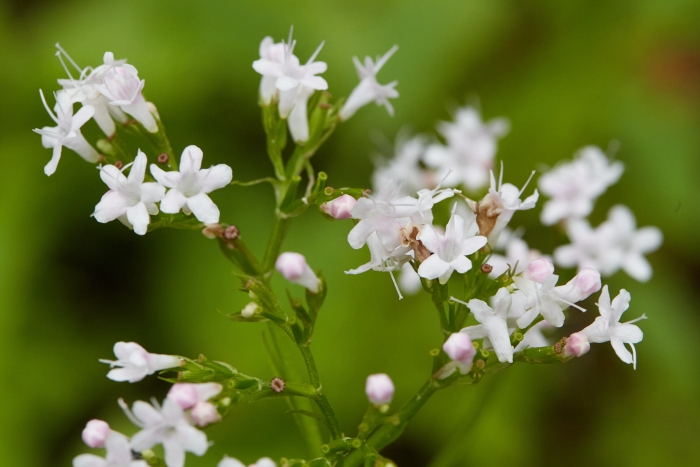Scouler’s Valerian
(Valeriana scouleri)
Scouler’s Valerian (Valeriana scouleri)
/
/

Ken-ichi Ueda
CC BY 4.0
Image By:
Ken-ichi Ueda
Recorded By:
Copyright:
CC BY 4.0
Copyright Notice:
Photo by: Ken-ichi Ueda | License Type: CC BY 4.0 | License URL: http://creativecommons.org/licenses/by/4.0/ | Rights Holder: Ken-ichi Ueda | Publisher: iNaturalist | Date Created: 2022-05-27T12:19:51-07:00 |
























Estimated Native Range
Summary
Valeriana scouleri, commonly known as Scouler’s valerian, is a perennial herb that is native to moist, forested habitats in western North America, including the US states of California, Oregon, Washington, Idaho, and Montana. It typically grows up to 1 meter tall and features clusters of small, white to pale pink flowers that bloom from late spring to early summer. The flowers are mildly fragrant and attract a variety of pollinators. Scouler’s valerian has a clumping form with pinnately compound leaves that are lush and green, adding to its visual appeal in a garden setting.
Scouler’s valerian is valued for its ease of maintenance and its ability to thrive in shady conditions, making it a suitable choice for woodland gardens, shaded borders, and naturalized areas. It prefers consistently moist soil and partial shade, although it can tolerate periods of drought once established. This plant is also used in traditional medicine, and its roots have been harvested for their sedative properties. In cultivation, it is important to manage its spread, as it can self-seed and become somewhat aggressive in favorable conditions.CC BY-SA 4.0
Scouler’s valerian is valued for its ease of maintenance and its ability to thrive in shady conditions, making it a suitable choice for woodland gardens, shaded borders, and naturalized areas. It prefers consistently moist soil and partial shade, although it can tolerate periods of drought once established. This plant is also used in traditional medicine, and its roots have been harvested for their sedative properties. In cultivation, it is important to manage its spread, as it can self-seed and become somewhat aggressive in favorable conditions.CC BY-SA 4.0
Plant Description
- Plant Type: Herb
- Height: 2-4 feet
- Width: 1-1.5 feet
- Growth Rate: Moderate
- Flower Color: Pink, White
- Flowering Season: Spring, Summer
- Leaf Retention: Deciduous
Growth Requirements
- Sun: Full Sun, Part Shade
- Water: Medium
- Drainage: Medium
Common Uses
Bee Garden, Butterfly Garden, Low Maintenance
Natural Habitat
Moist, forested habitats including forest understories and streambanks in western North America
Other Names
Common Names: Western Valerian
Scientific Names: , Valeriana scouleri, Valeriana adamsiana, Valeriana capitata var. hookeri, Valeriana follettiana, Valeriana hookeri, Valeriana humboldtiana, Valeriana laevigata, Valeriana laevigata, Valeriana pauciflora
GBIF Accepted Name: